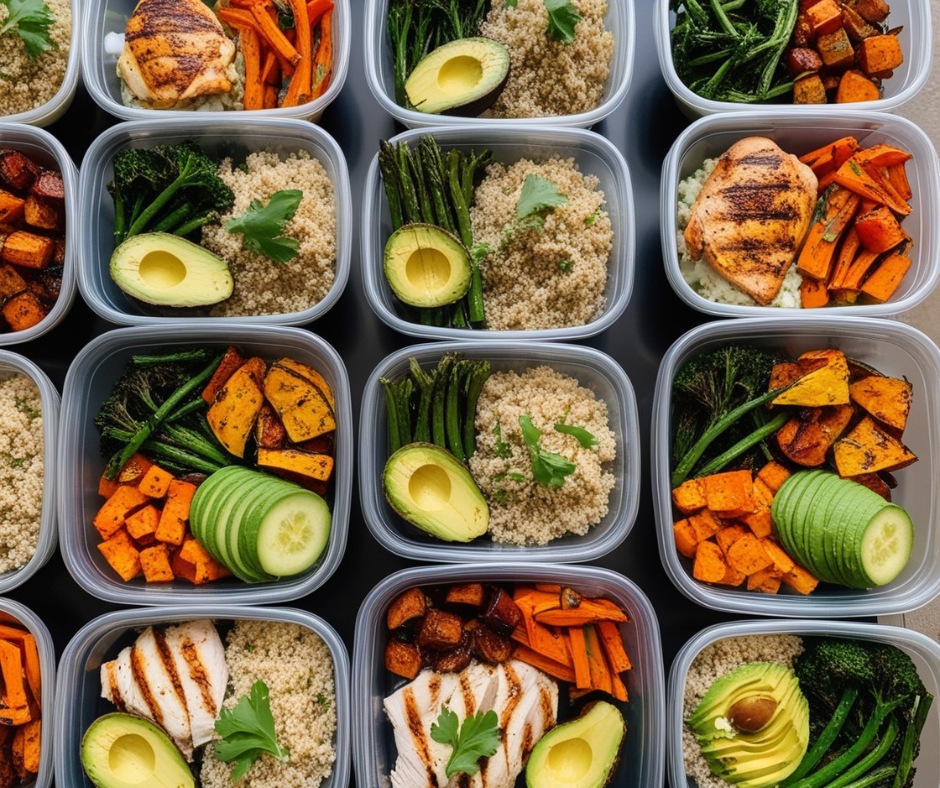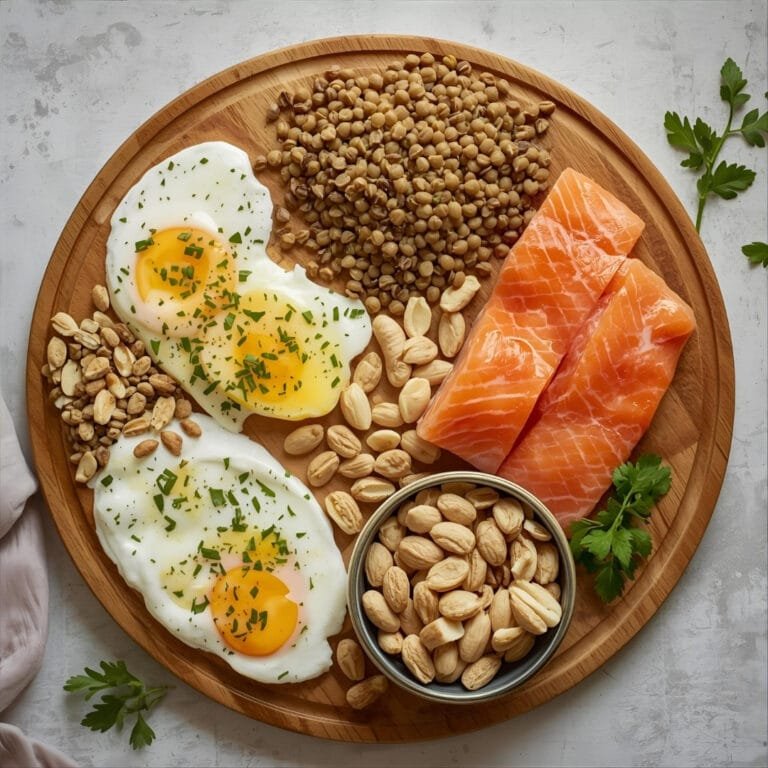Disclosure:
Thank you for reading this post, don't forget to subscribe!
Some of the links on this website are affiliate links. This means that if you click on the link and make a purchase, we may receive a small commission at no extra cost to you. Your support helps us keep the site running.Learn more on my Privacy Policy and Affiliate Disclosure page. Thank you for your support!
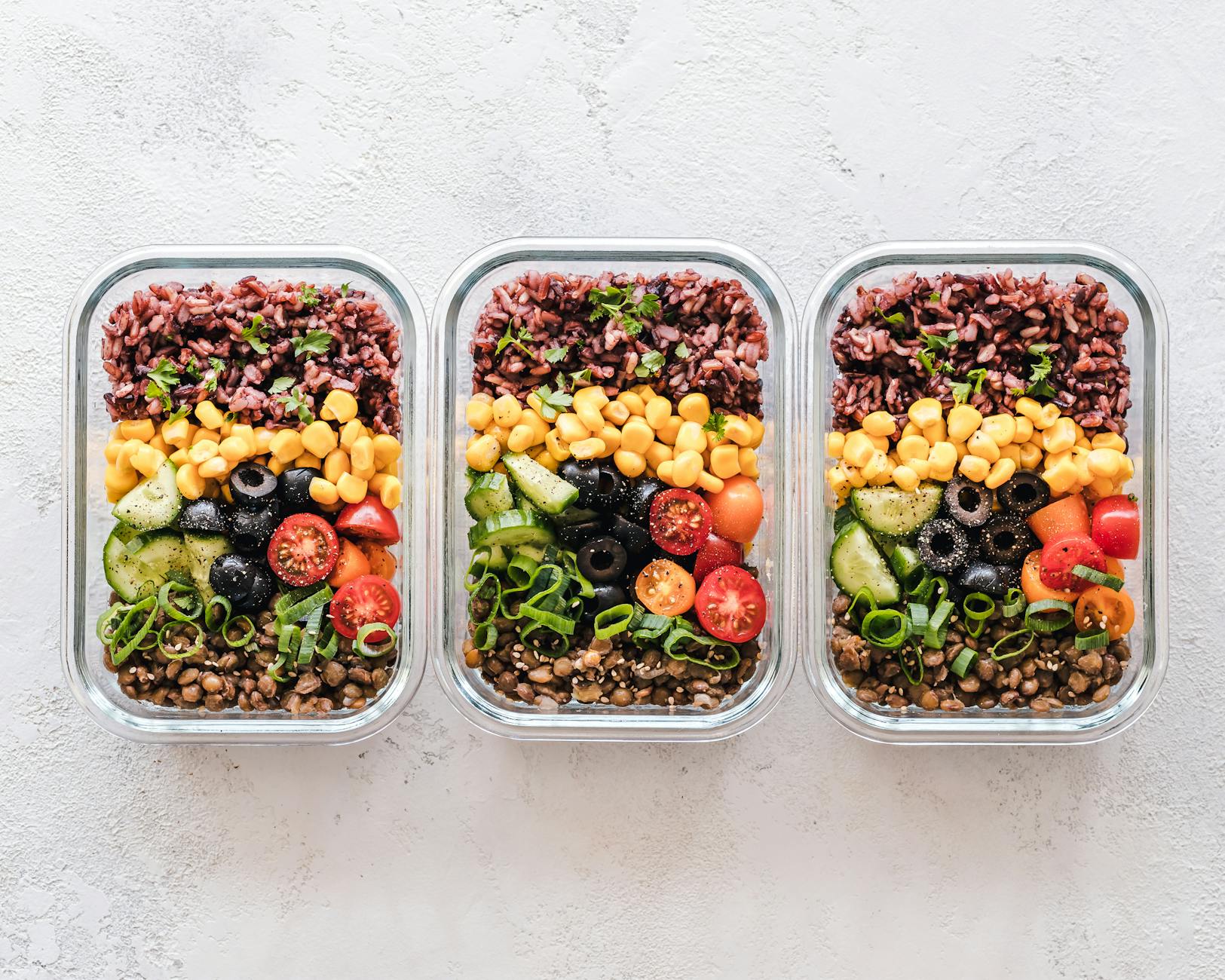
Tired of jumping from one crash diet to another with no lasting results? You’re not alone. 78% of people who start a diet give up within the first two weeks, often because they lack a practical, sustainable plan. The journey to weight loss doesn’t have to be a maze of confusion and frustration.
Imagine having a complete roadmap to your weight loss goals – one that takes the guesswork out of what to eat and when. ?️ Our carefully crafted 7-day meal plan combines delicious, satisfying recipes with proven weight loss principles, making your journey both enjoyable and effective. No more staring at your fridge wondering what to cook or falling into the takeout trap after a long day.
Let’s explore everything you need to know about successful weight loss, from stocking your kitchen with the right ingredients to preparing mouthwatering meals that support your goals. We’ll break down the essentials of weight management, share time-saving prep techniques, and walk you through a full week of balanced, nutritious meals that actually taste good. ?✨
Understanding the Basics of Weight Loss

Caloric Deficit Explained
A caloric deficit occurs when you consume fewer calories than your body burns. To lose one pound of weight, you need to create a deficit of approximately 3,500 calories. For safe and sustainable weight loss, aim for a daily deficit of 500-750 calories, leading to 1-1.5 pounds of weight loss per week.
Check out our post on Healthy Eating Habits for Sustainable Weight Loss
Explore tips and strategies to complement your 7-day meal plan with mindful eating habits that support lasting weight loss.
Importance of Macro Balance
A well-balanced distribution of macronutrients is crucial for healthy weight loss:
- Proteins: 25-30% of daily calories (supports muscle maintenance)
- Carbohydrates: 45-55% of daily calories (provides energy)
- Fats: 20-30% of daily calories (helps hormone production)
read next:
The Benefits of Intermittent Fasting for Weight Loss
Intermittent fasting (IF) has emerged as one of the most popular health…
Create Your Custom Meal Plan to Burn Fat and Lose Weight Fast – With a Free 7-Day Meal Plan
Customizing a meal plan is one of the most effective strategies for…
Portion Control Guidelines
Here’s a simple guide to portion sizes using everyday items:
| Food Group | Portion Size | Visual Reference |
|---|---|---|
| Protein | 3-4 oz | Deck of cards |
| Carbs | 1/2 cup | Tennis ball |
| Vegetables | 1 cup | Baseball |
| Fats | 1 tbsp | Thumb tip |
Remember to measure portions initially until you can estimate accurately by sight. Focus on filling half your plate with vegetables, one-quarter with lean protein, and one-quarter with complex carbohydrates.
Now that you understand these fundamental principles, let’s look at how to prepare your kitchen for successful meal planning.
Learn more about 15 Quick and Easy Workouts to Pair with Your Weight Loss Diet-Boost your results by pairing your meal plan with these quick, effective workouts designed for weight management.
Essential Kitchen Prep
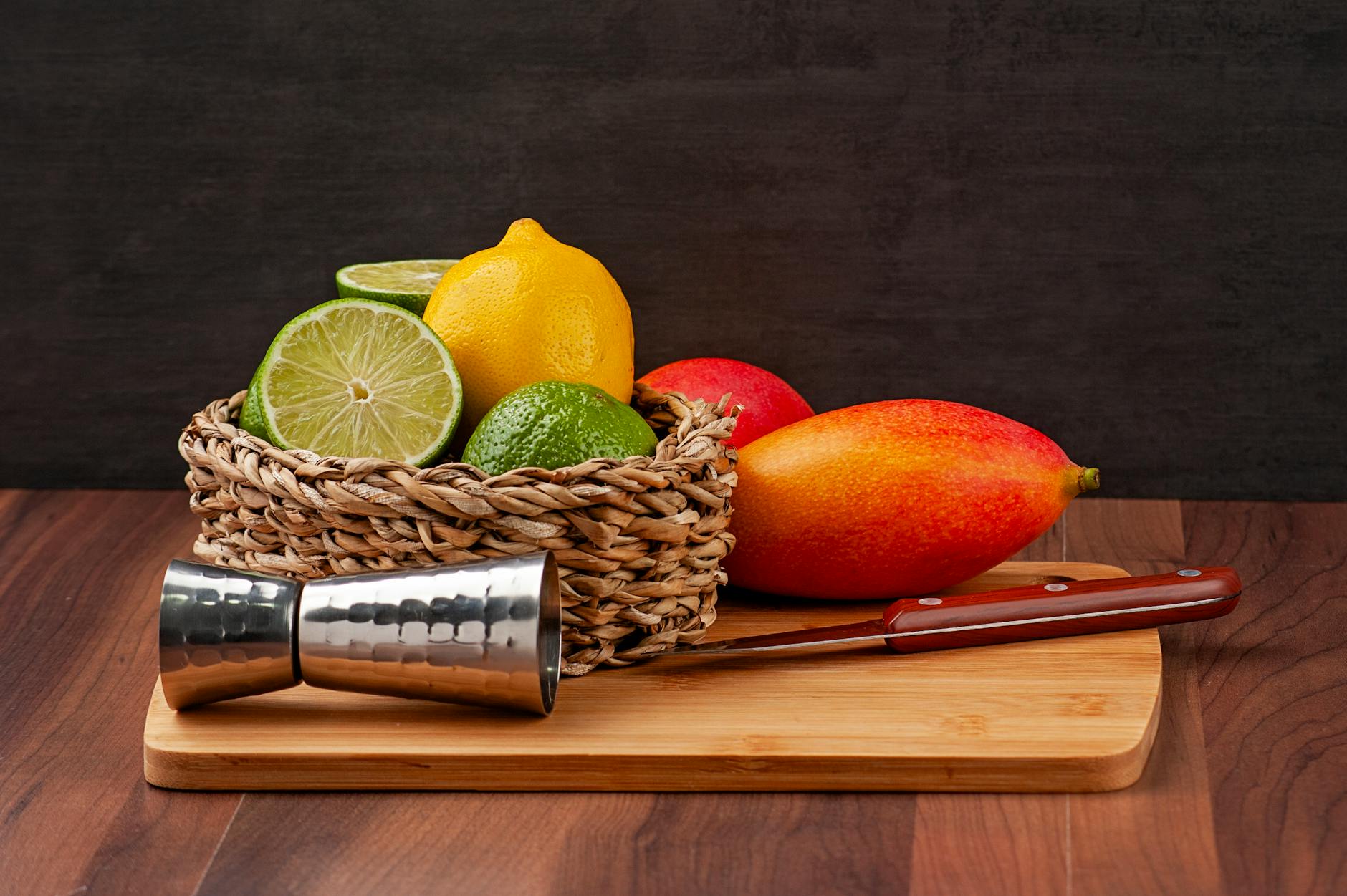
Grocery Shopping List
- Lean proteins (chicken breast, fish, tofu)
- Complex carbs (quinoa, brown rice, sweet potatoes)
- Fresh produce (leafy greens, berries, cruciferous vegetables)
- Healthy fats (avocados, olive oil, nuts)
- Pantry staples (herbs, spices, broth)
Meal Prep Equipment
| Essential Items | Purpose | Approximate Cost |
|---|---|---|
| Food scale | Portion control | $15-25 |
| Meal prep containers | Storage | $20-30 |
| Sharp knife set | Food preparation | $50-100 |
| Food processor | Quick chopping | $40-80 |
Food Storage Solutions
- Use glass containers for hot foods
- Invest in vacuum-seal bags for bulk ingredients
- Label everything with dates
- Organize refrigerator by meal days
- Store cut vegetables in water-filled containers
Time-Saving Tips
- Batch cook grains and proteins on weekends
- Wash and chop vegetables immediately after shopping
- Pre-portion snacks into grab-and-go containers
- Prepare overnight oats in batches
- Keep a running inventory of pantry items
A well-organized kitchen is crucial for successful meal planning. Keep frequently used items within easy reach and arrange your workspace efficiently. Group similar ingredients together in your pantry and refrigerator for quick access during meal prep. Now that your kitchen is properly equipped and organized, let’s explore the structure of your weekly meals.
Weekly Meal Structure

Daily Calorie Distribution
A well-structured weight loss meal plan typically follows a 1500-1800 calorie range, distributed across meals as follows:
| Meal | Percentage | Typical Calories |
|---|---|---|
| Breakfast | 25% | 375-450 |
| Lunch | 30% | 450-540 |
| Dinner | 30% | 450-540 |
| Snacks | 15% | 225-270 |
Meal Timing Guidelines
Optimal meal timing helps maintain stable blood sugar and supports weight loss:
- Breakfast: Within 1-2 hours of waking
- Lunch: 4-5 hours after breakfast
- Dinner: At least 3 hours before bedtime
- Snacks: Mid-morning and mid-afternoon
Snack Integration Strategy
Strategic snacking prevents overeating and maintains energy levels. Ideal snack combinations include:
- Protein + Complex Carbs: Apple with 1 tbsp almond butter
- Protein + Healthy Fats: Greek yogurt with nuts
- Fiber + Protein: Carrot sticks with hummus
- Complex Carbs + Protein: Whole grain crackers with cheese
Plan your snacks around your most challenging times of day, typically mid-morning and mid-afternoon. Keep portions controlled by pre-portioning snacks at the beginning of the week.
Now that you understand how to structure your daily meals, let’s look at specific meal suggestions for Monday through Wednesday.
Monday to Wednesday Meals
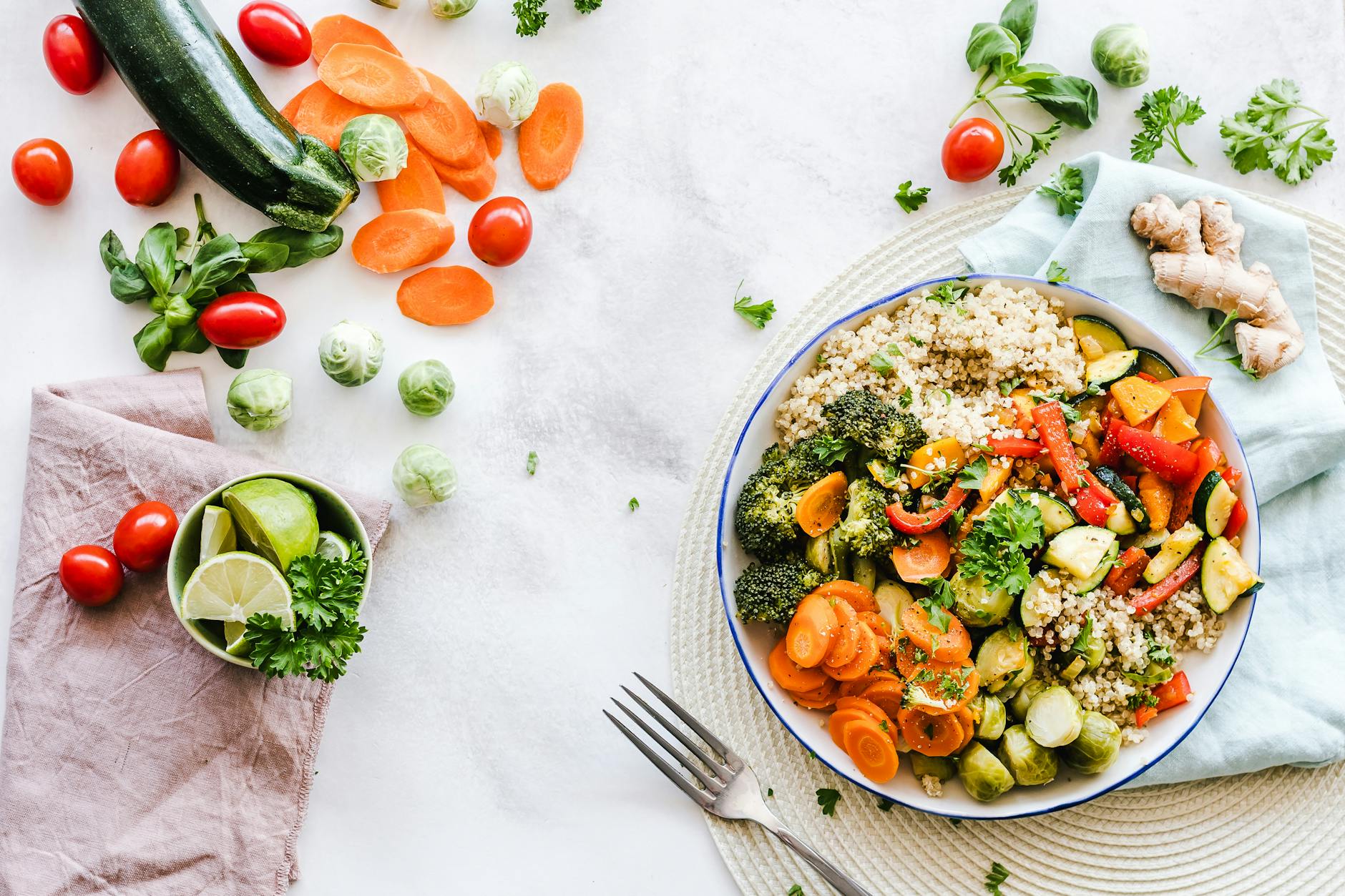
Monday’s Complete Menu
- Breakfast: Greek yogurt parfait with berries and honey (300 calories)
- Snack: Apple slices with 1 tbsp almond butter (150 calories)
- Lunch: Quinoa chicken bowl with roasted vegetables (400 calories)
- Snack: Carrot sticks with hummus (120 calories)
- Dinner: Baked salmon with sweet potato and broccoli (450 calories)
Tuesday’s Complete Menu
- Breakfast: Overnight oats with chia seeds and banana (350 calories)
- Snack: Mixed nuts (160 calories)
- Lunch: Turkey and avocado wrap with side salad (380 calories)
- Snack: Greek yogurt with honey (130 calories)
- Dinner: Lean beef stir-fry with brown rice (450 calories)
Wednesday’s Complete Menu
- Breakfast: Vegetable omelet with whole-grain toast (320 calories)
- Snack: Protein smoothie (180 calories)
- Lunch: Mediterranean chickpea salad (350 calories)
- Snack: Celery with peanut butter (140 calories)
- Dinner: Grilled chicken with quinoa and asparagus (420 calories)
Prep Instructions
- Sunday prep: Cook quinoa, brown rice, and chicken breast
- Portion snacks into containers
- Wash and cut vegetables
- Prepare overnight oats
Nutrition Breakdown
| Day | Total Calories | Protein | Carbs | Healthy Fats |
|---|---|---|---|---|
| Monday | 1420 | 89g | 142g | 48g |
| Tuesday | 1470 | 84g | 156g | 52g |
| Wednesday | 1410 | 92g | 138g | 45g |
These first three days establish a balanced eating pattern with proper portion control and nutrient distribution. Next, we’ll explore the meal plans for Thursday through Sunday, which maintain similar nutritional principles while introducing more variety to keep your diet interesting and sustainable.
Thursday to Sunday Meals

Thursday’s Complete Menu
- Breakfast: Greek yogurt parfait (300 calories)
- Layer sugar-free granola, berries, and honey
- Lunch: Quinoa Buddha bowl (400 calories)
- Mixed greens, chickpeas, avocado
- Dinner: Baked cod with vegetables (350 calories)
- Lemon-herb seasoning, roasted asparagus
Friday’s Complete Menu
- Breakfast: Protein smoothie bowl (350 calories)
- Spinach, banana, protein powder, almond milk
- Lunch: Turkey wrap with hummus (400 calories)
- Whole grain tortilla, fresh vegetables
- Dinner: Grilled chicken fajitas (375 calories)
- Bell peppers, onions, whole wheat tortillas
Saturday’s Complete Menu
- Breakfast: Whole grain waffles (325 calories)
- Fresh strawberries, sugar-free syrup
- Lunch: Mediterranean salad (375 calories)
- Olives, feta, cucumber, tomatoes
- Dinner: Lean beef stir-fry (400 calories)
- Brown rice, mixed vegetables
Sunday’s Complete Menu
- Breakfast: Veggie omelet (300 calories)
- Mushrooms, spinach, low-fat cheese
- Lunch: Tuna nicoise salad (350 calories)
- Hard-boiled eggs, green beans, potatoes
- Dinner: Baked salmon (425 calories)
- Sweet potato mash, steamed broccoli
| Meal Timing | Average Calories | Protein Content |
|---|---|---|
| Breakfast | 300-350 | 20-25g |
| Lunch | 375-400 | 25-30g |
| Dinner | 375-425 | 30-35g |
Now that you have your complete week of meals planned out, let’s explore some detailed recipes for these dishes in our recipe collection section.
Recipe Collection

Breakfast Options
- Overnight Oats with Berries (300 calories)
- Greek Yogurt Parfait (250 calories)
- Spinach and Mushroom Egg White Omelet (200 calories)
- Whole Grain Toast with Avocado (280 calories)
Lunch Recipes
- Quinoa Buddha Bowl (350 calories)
- Grilled Chicken Salad (300 calories)
- Mediterranean Wrap (320 calories)
- Tuna Lettuce Cups (250 calories)
Dinner Ideas
- Baked Salmon with Roasted Vegetables (400 calories)
- Turkey Meatballs with Zucchini Noodles (350 calories)
- Tofu Stir-Fry with Brown Rice (380 calories)
- Lean Beef and Sweet Potato Bowl (420 calories)
Healthy Snacks
- Apple Slices with Almond Butter (150 calories)
- Greek Yogurt with Honey (120 calories)
- Mixed Nuts and Dried Fruit (160 calories)
- Celery with Hummus (100 calories)
| Meal Type | Prep Time | Protein (g) | Calories |
|---|---|---|---|
| Breakfast | 10-15 min | 15-20g | 250-300 |
| Lunch | 15-20 min | 20-25g | 300-350 |
| Dinner | 20-30 min | 25-30g | 350-400 |
| Snacks | 5 min | 5-10g | 100-160 |
Each recipe has been carefully selected to provide optimal nutrition while maintaining a caloric deficit. The meals are rich in protein to preserve muscle mass during weight loss, include complex carbohydrates for sustained energy, and incorporate healthy fats for satiety. All recipes use readily available ingredients and can be prepared in advance for convenient meal prep.
Now that you have a collection of nutritious recipes, let’s explore how to make this meal plan work effectively in your daily routine.
Making the Plan Work

Substitution Guide
Flexibility is key to maintaining a sustainable meal plan. Here’s a comprehensive substitution guide for common ingredients:
Find out the article MyPlate Plan by USDA Learn more about creating balanced meals with guidance from the USDA’s MyPlate Plan, tailored to your weight loss and nutritional needs.
| Food Category | Original Ingredient | Healthy Substitutions |
|---|---|---|
| Proteins | Beef | Lean turkey, chicken, tofu |
| Carbs | White rice | Quinoa, cauliflower rice, brown rice |
| Fats | Butter | Greek yogurt, avocado, olive oil |
| Dairy | Whole milk | Almond milk, oat milk, soy milk |
Eating Out Tips
Following your meal plan doesn’t mean avoiding social situations. Use these strategic approaches:
- Preview restaurant menus online before dining out
- Choose grilled or steamed options over fried foods
- Ask for dressings and sauces on the side
- Practice portion control by boxing half your meal immediately
- Select vegetables or salad as side dishes instead of fries
Tracking Progress
Monitor your journey effectively with these key metrics:
- Weekly weight measurements at the same time of day
- Body measurements every two weeks
- Progress photos monthly
- Food diary entries daily
- Energy levels and mood tracking
Remember to make adjustments based on your progress. If certain meals aren’t working for you, refer to the substitution guide and make appropriate changes. Focus on consistency rather than perfection, and you’ll find this meal plan becomes a sustainable part of your lifestyle. Now that you have all the tools needed, you’re ready to begin your weight loss journey with confidence.
explore more:
Conclusion
Creating and following a structured meal plan is a powerful step toward achieving your weight loss goals. With proper planning, balanced nutrition, and delicious recipes at your fingertips, you can make sustainable changes to your eating habits while enjoying satisfying meals throughout the week.
Remember that successful weight loss is a journey, not a race. Take time to prepare your kitchen, stock up on wholesome ingredients, and give yourself grace as you adapt to new eating patterns. Whether you’re just starting or looking to refine your approach, this 7-day meal plan serves as your foundation for a healthier lifestyle. Start with one week, adjust as needed, and watch as small, consistent changes lead to meaningful results.
more about:
HEALTH / WELLNESS / FITNESS / NUTRITION
share this article


